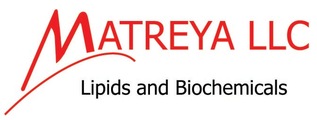服务热线
021-60498804
产品中心
/ Products Classification 点击展开+
| Cat. Number | 1336 |
| Chemical Name | 1336 383907-36-6 磷脂酰肌醇,(植物,大豆),(钠盐) Phosphatidylinositol, (plant, soy), (Na salt) |
| CAS Number | 383907-36-6 |
| Mol. Formula | C45H78O13P•Na |
| Mol. Weight | 858 + Na |
| Qty 1 |
1mg |
| Qty 2 | 50mg/ml |
| Appearance | liquid |
| Application Notes | 98+%,TLC; identity confirmed by MS |
| Synonym | Phosphatidylinositol, plant, soy (Na+ salt),磷脂酰肌醇,(植物,大豆),(钠盐) Phosphatidylinositol, (plant, soy), (Na salt) |
| Solubility | chloroform, ethyl ether |
| Storage condition | -20°C |
| References | Application Notes: The metabolism of inositol lipids is involved in the signal transduction of many hormones, neurotransmitters and growth factors.1,2,3 In the classical pathway, phosphatidylinositol-specific phospholipase C (PIPLC) hydrolyzes phosphatidyl 4,5-bisphosphate (PIP2) to yield 1,2- diacylglycerol (DAG) and inositol 1,4,5-triphosphate (IP3). The role of IP3 and DAG as second messengers is well recognized. In a second, more recently discovered pathway, the activation of phosphoinositide 3-kinase (PI3K) results in the formation of three novel phosphatidyl (PI) lipids phosphorylated at the D3 positions of the inositol ring: PI-3- P, PI-3,4-P2, and PI-3,4,5-P3. These D3 lipids are not known substrates for any of the phospholipase C enzymes and function as second messengers. PI 3-kinase activity is correlated with many cellular processes including the regulation of cell growth, oncogenic transformation, chemotaxis and receptor down-regulation. A recent paper on the effect of PI-3,4-P2 on the Akt proto-oncogene product also contains protocols for applying PIP’s to cell cultures.4 Matreya’s synthetic phosphatidylinositols and inositol phosphates are excellent tools for investigating these second messengers, understanding the enzyme mechanisms involved in phosphoinositide metabolism and designing therapeutic pharmacological agents.
References: |





